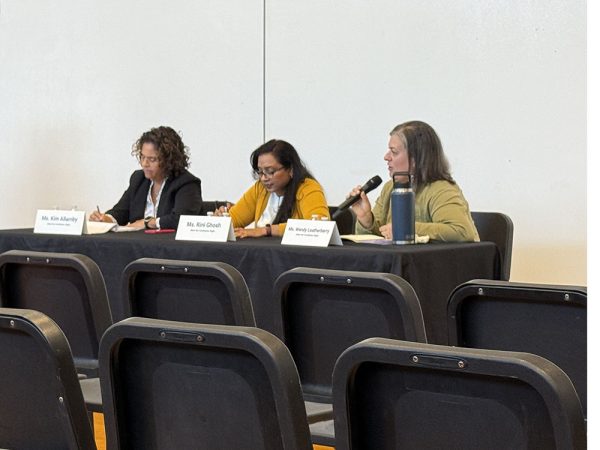Beachwood City Schools Ranked Third-Highest Performing District in Ohio
Hardis: It’s significant, but ‘not the be-all, end-all.’
“Overall, the district has been on a steady rise,” Superintendent Bob Hardis said of Beachwood’s performance in recent years.
The results are in for Beachwood City Schools’ annual report card from the Ohio Department of Education (ODE), which were made available to the public in late February.
The ODE’s latest evaluation, which measures the performance of students in the 2014-2015 school year, gave the school district a Performance Index Score of 109.220. This translates to an “A” rating, making Beachwood the third-highest performing school district in the state.
Solon City Schools claimed the top spot, with a score of 111.007, and Lucas County’s Ottawa Hills Local School District took second place, at 109.906. Out of the state’s 611 school districts, only six received an “A” rating, according to cleveland.com.
“Overall, the district has been on a steady rise,” Superintendent Bob Hardis said of Beachwood’s performance in recent years.
In the 2013-2014 school year, Beachwood was ranked eighth-highest. At the time, it was the best score the district had ever received.
“It highlights the great achievements [of our students and staff],” BHS Principal Dr. Ed Klein said. “We’re in rarefied air.”
But Klein said he feels the district should not rest on its laurels.
“We’re an excellent school system. We have great kids. We have great staff. And, we want to continue to improve,” Klein said.
According to the ODE’s website, district report cards “give your community a clear picture of the progress of your district and schools in raising achievement and preparing students for the future.”
Scores are primarily determined by students’ performance on state standardized testing. After a series of changes in ODE’s methods of evaluating districts over the last few years, the department now uses end-of-course assessments designed by American Institutes for Research Assessments (AIR).
Both the Partnership for Assessment of Readiness for College and Careers test (PARCC) and the AIR Assessments were used in determining the 2014-2015 ranking.
Hardis said he largely approves of the academic curriculum that is mandated by the state. However, he couldn’t say the same for the manner in which the ODE evaluates districts.
Though Beachwood fared well on this year’s report card, Hardis noted that standardized testing is merely one of several ways in which to measure a district’s performance.
“[This method is] not terrible. It’s not great. It sits in that muddy middle,” he said.
However, Hardis admitted he is unsure of a way to improve the state’s methods of evaluation.
“There are no simplistic fixes to this system,” he said.
“It [is] one important piece of information that we use as a school system to gauge our kids’ learning, among other gauges, as well,” he said. Hardis said in-class assessments, such as a midterm or final exam, are typically more indicative of the quality of a student’s education.
“It’s a nice feather in our cap, … [but, it’s] not the be-all, end-all,” he continued. Though, Hardis said that the district should not dismiss the state’s evaluation entirely, as it often shapes perception of the community.
The system is “highly flawed,” he said, adding that assessments do not provide a holistic view of a student.
“No scientist, no statistician, no educator … worth their salt could really look at this and say ‘This is a highly valid way of measuring learning.’”
On the other hand, Hardis said he does not feel that district educators should ignore the state assessments.
“In a very practical sense, it is a highly, highly publicized measure. We cannot afford to not pay attention to them,” he said.
Even with an “A” ranking, Beachwood still fell short in some areas of evaluation. This includes the ODE’s Gap Closing Measure.
The ODE’s website explains that Gap Closing analyzes the performance of students who are disadvantaged due to “income, race, ethnicity or disability.” The district received an 89.9%, which the ODE defines as a “B”, in Gap Closing.
Hardis said he isn’t satisfied.
“We’re doing okay, but not good enough,” he explained, citing students with disabilities’ poor performance in mathematics as one area in which the district hopes to improve. “We are not closing the gap as quickly as we ought to be.”
To address these shortcomings, Hardis said the district will analyze the performance of individual students to locate the disconnect between instruction and understanding. Then, district officials will consider altering the curriculum and methods of instruction.
Klein said he feels standardized test scores are not entirely reflective of a student’s growth in high school. For instance, an individual could excel in classroom discussions or extracurricular activities, but not perform as well on an end-of-course assessment.
The ODE’s current evaluation method does not take such criteria into account.
“You can’t quantify those things that have to be qualified,” Klein said.

Grant Gravagna has been active on The Beachcomber staff for four years. As Editor-in-Chief, he oversees a staff of reporters, photographers and cartoonists....







![“My parents have always said that education is important. My parents are Chinese immigrants, I'm Chinese American, [and that's a] value that has always been ingrained in our community,” said Senior Lyndia Zheng, pictured with Tony Zheng](https://bcomber.org/wp-content/uploads/2025/10/DSC_4244-600x400.jpg)




